Use the following link to download the February 3, 2024 issue of the syəcəb
Author: Kim Kalliber
Hawks and Lady Hawks enter playoff mode

By Micheal Rios, Tulalip News
It’s been a roller coaster like season for the Lady Hawks. This up and down, twist and turn filled ride is most evident by their final two home games.
On Saturday, January 27, Tulalip hosted fellow tribal school Taholah at Francy J. Sheldon gymnasium. We’ll save the disastrous details and simply refer to this one as a game to forget as the Lady Hawks found themselves on the wrong end of an 83-11 thumping.

Forty-eight hours later, the girls rebounded in a huge way when Shoreline Christian came to town on Monday, January 29. A slow-paced opening quarter yielded buckets by Tieriana, Audrielle, Raylee, and Kendra who combined to put their team ahead, 9-4.
Over the 2nd and 3rd quarters, the Lady Hawks found their groove in an emphatic way. With the McLean sisters spearheading the attack, the home team got the crowd into a frenzy by forcing Shoreline to turn the ball over and over again. Each time resulted in a transition opportunity for either an Audrielle layup or a Tieriana 3-pointer.
Entering the 4th quarter, Tulalip led 37-17. Kendra, a senior forward, continued to battle multiple Shoreline players to secure rebounds which opened up uncontested shot attempts for her teammates. When only being single covered, she’d use her size advantage to shoot over the smaller defender.
To the delight of all the friends and family who turned out for senior night, the Lady Hawks bounced back the Taholah loss with a 52-24 W. Audrielle led all scorers with 22 points, her big sister scored 18 points, and Kendra added 8 points.
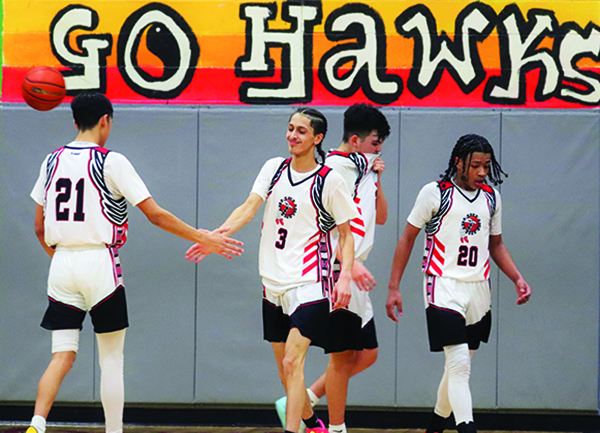
After the game, senior guard Tieriana shared, “Being senior night, there was a lot of pressure to perform and get the win. Usually when I miss shots early in the game, I quit shooting late, but that didn’t happen today. I kept shooting and, especially in that 3rd quarter, I got hot. [Steph Curry hot]. After our tough loss to Taholah, we really needed this game and we got it.”
When was asked how much it meant to get this W for her sister on senior night, junior guard Audrielle quipped, “I don’t know. A lot!” Fair enough. She then added, “This win boosts our confidence with playoffs coming up. That’s for sure.”
As of January 31, the WIAA website showed the Tulalip Lady Hawks earning a play-in bye, which sets them up with a Saturday, February 3, showdown with Orcas Island at Orcas Island high school. Tip scheduled for 12:30pm.
____________________________________________
Hawks secure #2 seed with back-to-back Ws at home
The Tulalip Heritage Hawks were riding a 4-game winning streak when they faced off with Taholah on Saturday, January 27. The gym was near full capacity with some people going so far as to bring in chairs from staff offices in order to sit down. Playing another tribal school always adds some extra juice to players on the court and fans sitting courtside.

The boys mauled their opponent from the get go, jumping out to a 20-9 after one quarter of play. Playing their patented style of run-and-gun offense, fueled by forcing turnovers, would wear on Taholah’s starters as the game went along.
While Heritage dictated tempo, freshman guard J.J. Gray carved up the Taholah defense at every opportunity. At halftime, J.J. had 19 points and nearly outscored the visitors by himself as the home team led 37-19.
In the second half, Chano Guzman, Tokala BlackTomahawk, and Amare Hatch would score an array of buckets from within the painted area and along the perimeter to put the game away.
The Hawk’s extended their winning streak to 5 with a 67-45 win. Tulalip was led by J.J.’s 22 points, while Tokala scored 13 points, and both Chano and Amare had 11 points each.
“Our practices have been improving, our team energy is going up, and our mentality is getting right,” remarked senior guard Chano of the team’s win streak.
“All the fans filling the gym and their energy we definitely feed off,” added freshman guard J.J.
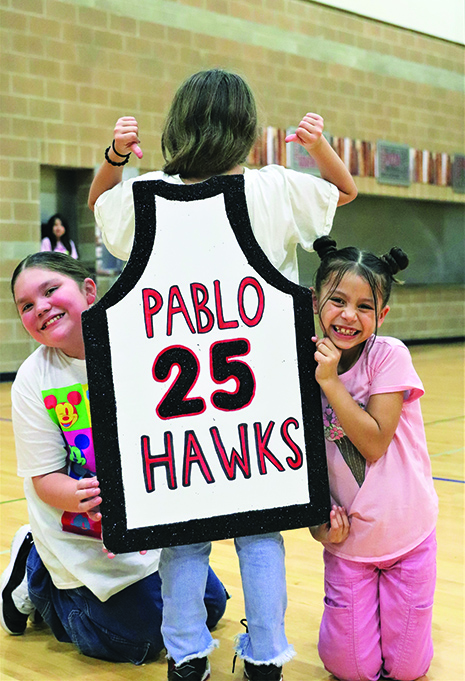
Tulalip thrived in their home court advantage, once again, just two days later when they hosted Shoreline Christian. Head coach Shawn Sanchey, a Heritage alum and four-year hooper, understood the importance of senior night for his squad and trotted out an all-senior lineup.
Senior forward Hazen Shopbell Jr. responded to the starting nod by knocking down a midrange jumper and then swishing a 3-pointer. Up 5-0 in the early going, Coach Sanchey called timeout to get his normal starters into the game and his seniors a rousing ovation as they hit the bench. Shoreline responded by going on a run of their own and took a short-lived lead, 5-6.
Once Tulalip’s offense found its normal tempo, it was a wrap. At the end of the 1st quarter, the boys led 16-11. By the end 2nd quarter, that lead was pushed to 29-19. There was some contentious moments, fueled by physical play by both teams and the heightened tension from a packed house, but it proved to only fuel contributions from Tokala BlackTomahawk and Amare Hatch.
Tokala scored 12 points, including two 3-pointers, and Amare scored 18 points, including three 3-pointers, that kept the Hawks rowdy fanbase in classic form while the home team secured another W, 59-34.
With the winning streak now at 6 in a row, Coach Sanchey described how much the big night meant to his boys.
“Senior night is really important to the kids. I still remember my senior night and how much it meant to have all the support in the stands, rooting us on,” he said. “Staring five seniors allowed for them take in the moment and hopefully share in an experience they’ll never forget. And they responded, too, by helping us to the early lead.
“Of course, there were some moments of adversity late in the 1st half, but my coaching staff has prepared them for moments like that. We emphasize fighting through adversity, keeping the motor going, and not letting anything dictate what we know we’re capable of achieving on the court. They really showed that resilient mindset tonight. I’m really proud of all our players.”
As of January 31, the WIAA website showed the Tulalip Hawks earning the right to host a home playoff game in the opening round of Districts. Game time and opponent yet to be determined. However, it will be played at Francy J. Sheldon gymnasium on Saturday, February 3.
I stand with Palestine and I hope you will, too

By Lilly Jefferson, Heritage student & SYS intern
Have you ever heard the phrase “Free Palestine”? Do you know what it means? If you don’t, I will inform you. From October 7, 2023 to today, Palestine and Israel have been in an ongoing war. If your active on social media, then you’re aware it’s been 103+ days of words like occupation, genocide, bombing, and ethnic cleansing being associated with what’s happening in Palestine.
Palestine is located geographically in West Asia. Palestinian territory is the West bank, East Jerusalem, and the Gaza Strip.
In 2017 there were 590,481 people in Gaza. This year there are currently 2 million, and a large percentage of these people in Gaza were pushed away from other parts of Israel. In other words, in Gaza there are currently 2 million displaced people. The most recent and ongoing attacks by Israel have resulted in 26,000 dead and over 64,000 wounded Palestinians civilians, according to the latest Al Jazeera update.
What is happening to Palestinians now, is what has happened to our ancestors.
“If social media was around back then, then people could actually witness firsthand the abuse that took place towards our people, and as Indigenous people we look at all these other Indigenous groups as being our relatives,” said Tulalip educator Natosha Gobin. “So for me it’s like those are our relatives, we need to speak up for them, we need to stand up for them, we need to figure out what we can do to support their livelihood. They just want to live.”
Many of the 2 million in Gaza are right now deprived of food, water, gas, medical supplies, and medicine, and more than 80% of Gaza live in poverty. Making it even worse is the fact that 9 out of 10 people don’t eat every day. The reason being is because Israel has been bombing Gaza’s citizens, churches, 340 schools, apartments, hospitals, refugee camps, and the city.
Israel has occupied Gaza for over 75 years now, meaning they are trying to take control over Gaza. Palestinians in Gaza have resisted for over 75 years and continue to this day. This isn’t the first time either.
78% and more of historic Palestine has been taken by Zionist forces. Zionism is a nationalist, political view that called for the creation of a Jew state, and now supports the continued existence of Israel as such a state. In 1948, the night of the Declaration of the State of Israel, 1.5 million Palestinians were moved overnight. Also, from 1947-1949, the Palestinian population was at 1.9 million, 750,000 Palestinians were made to be refugees beyond the borders of the state.
You may be wondering why our elected leaders aren’t speaking up, or taking a stand to support Palestine. “I’m going to start out saying what I have observed from state leaders, and federal leaders. Politicians are influenced by those who donate money to their campaigns, and the fear of losing that funding is what keeps them silent, the fear of losing that funding is what keeps them walking the fine line of ‘this is pretty horrible, what’s going on,’” Natosha pointed out. “But also choosing their words wisely to not affect their funding that comes their way. That is what I have learned from [elected] leaders.”
Palestine has elements of Arab, Islamic, and Christian traditions. Palestine uses fresh herbs, spices, and olive oil; those are elements of Palestine cuisine. Fishing is also an important factor in Palestinian culture. Palestine also has 1,000-year-old olive trees that are sacred, Israel has allowed settlers to steal olives, and destroy their trees. They have burned, destroyed or uprooted 800,000 Palestinian owned olive trees*. This year marks 70+ years of dispossession, and loss of homeland for the Palestinians.
Indigenous people such as Tulalip should care because we have experienced firsthand what it’s like for our rights, food and water, people, land, and culture to be taken from us. We know what it is like to lose mass people from our nation and no one does anything about it. We know what it’s like to resist attempted genocide and heal in the aftermath. Because we have experienced all of this, we as Indigenous people need to stand with Palestine.
Supporting Palestine can be done in a variety of ways. You can start off by boycotting Starbucks and McDonalds because in October 2023, Starbucks filed a lawsuit against their Worker union, because they made a post saying they stand with Palestine. McDonald boycotts are because the McDonald’s location in Israel donated free meals to Israeli soldiers. Some people say Starbucks and McDonalds maintain corporate support for Israel.
“Another reason to boycott is to not only show solidarity with Palestinians but to raise awareness!” said Tulalip Heritage student Raylee Lewis.
You can also buy keffiyehs and wear them as a mark of solidarity. Wearing keffiyehs shows you are with Palestine, and you support them. The keffiyeh is a traditional type of scarf worn in many ways. The designs on the keffiyeh symbolize aspects about Palestinian life. Every detail, and every design on the keffiyeh means something. The fishnet pattern represents Gaza’s connection to the sea, the leaves represent economic and cultural significance to olives, and the Bold lines represent historical trade routes.
Indigenous people across the world show solidary in a bunch of social movements they want to raise awareness for, like boarding schools (orange shirt day), wearing red for Missing and Murdered Indigenous Women, and by wearing ribbon skirts, coming together to sing, dance, and heal. These are all ways we can speak up and give attention to things we think are important.
Finally, the last way you can show that you stand with Palestine is to keep up on social media about what’s happening, where are protests, and when are global shut down days. The latest shut down days have been; November 29, and January 21-28. You can also call for a ceasefire now. Ceasefire means to stop fighting, it means to stop genocide, ceasefire means Free Palestine.
*Source: Time Magazine. https://time.com/5714146/olive-harvest-west-bank/
The artistry of knitting maven, Anita Sheldon
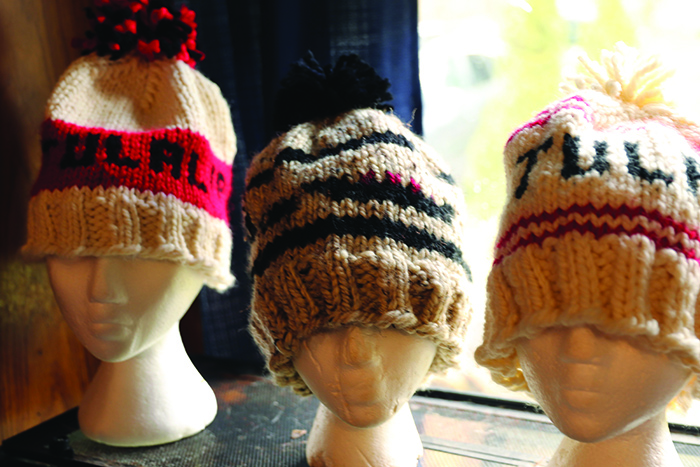
By Wade Sheldon, Tulalip News
In the gentle rhythm of needles and the soft embrace of yarn, Tulalip tribal member Anita “Keeta” Sheldon’s craft unfolds like a rich tapestry of tradition and enduring artistry. Born and raised in Tulalip, Anita, turning 84 this year, has been wielding knitting needles and crochet hooks for nearly six decades, crafting not just hats and sweaters but a legacy of warmth that spans generations. From the tender beginnings of making tiny garments for her babies, Anita’s hands have spun tales of love and comfort through her creations’ intricate loops and stitches. In her words, knitting and crocheting are not merely crafts; they are therapeutic, good for the soul, and a timeless art passed down through familial threads.
Recently, on January 27, Tulalip News sat down with Keeta and talked about knitting/crocheting and what that means to her.
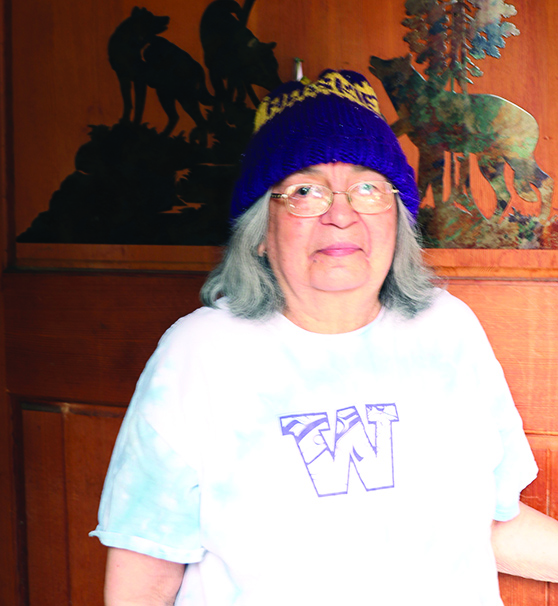
When did you first start learning to knit and crochet?
I started knitting and crocheting about 58 years ago. I started making hats and sweaters for my babies. Then, I began making Afghans by crocheting. When I’m not knitting, I am crocheting them.
Who was a significant influence in learning how to knit/crochet?
I would watch the renowned Sarah Sheldon knit. When one of my relatives was in the hospital with a broken back for six months, Grandma Sarah was there with a knitting needle and yarn and showed me how to knit. I watched her knit; she didn’t even have to look at her work while talking to you. She could knit nine pairs of socks a day and would sell them in Seattle. She would also raise her own sheep to create her own wool. She had her own spinning wheel and would make her own yarn. She was good.
What is the difference between knitting and crocheting?
The difference between crocheting and knitting is one has a straight needle, and the other has a hook at the end. You go one knot at a time when crocheting and use the whole needle when knitting. It’s faster to crochet, and the stitches are slightly looser. I like knitting, and it is more relaxing than crocheting.
Recently, you had a bad fall. How has it been getting back into knitting/crocheting?
It keeps my hands busy, it’s good therapy, and it’s also good for your mental health. Recently I fell and broke my wrist and couldn’t do anything for a few months. Now, I am doing therapy to help heal my hand. My doctor agreed to keep knitting; when I get tired, I put it down and rest, and I can do more each day.
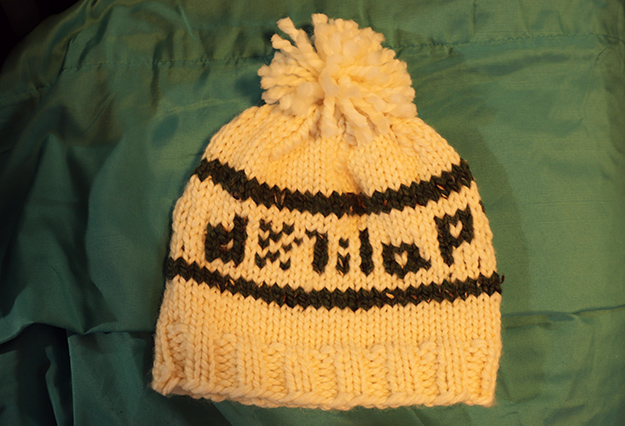
How long have you been selling your hats?
I just recently started selling my hats when I learned about the bazaar that happens around the year’s end. Before that, I made them as gifts for Christmas, birthdays, and when it gets cold out. They are well made, comfortable, and will last. My husky hat is over 40 years old and still keeps me warm.
What are some fond memories you have from making hats?
I made the husky hat because I am a Washington husky fan, and I made my husband a cougar one because he likes Washington State. But his was stolen from the boat dock the first time he wore it out. Then I made another, and it was stolen, so I never made him another one and instead made a blanket that he used to keep on his work chair. And when he passed, it was sent with him onto the other side.
Where did you get the canoe design from on your recent hats?
The design I used on some of my most recent hats was from the canoe that used to be at the old entrance to the reservation. I liked that design and feel like it represents our people. It can take two days to make a hat like that if you have the right tools and some suitable yarn.
If you are interested in purchasing or learning more about Anita’s hats or other products she creates, you can give her a call at (360) 653-8163.
Caring Warriors extend the season of giving

By Kalvin Valdillez, Tulalip News
It’s been a cold winter in the Pacific Northwest. Although we’ve seen just a limited amount of snow so far, we recently braved an arctic front that dropped the temperature to single-digit degrees on several nights during a near two-week span this January. And while many of us experienced a number of troublesome annoyances that come with the cold weather, such as burst pipes, frozen windshields, and icy roadways, at the end of the day, we could count ourselves fortunate to have a warm home to reside at during the extreme cold.
Unfortunately, there were over a thousand unhoused locals who had to tough out the freezing temperatures in the streets, out in wilderness, and anywhere they could find shelter. According to Snohomish County’s 2023 Point-in-Time Count of Homelessness, there was an 8.5 percent increase of unhoused citizens since 2022. The yearly count identified an additional 101 unhoused citizens, bringing the total count to 1,285, the highest it’s been in over a decade.
What started out as an idea to give back to their community during the holiday season has blossomed into a monthly donation drive organized by a local group known as the Tulalip Caring Warriors. After hosting two successful ‘warmth drives’ around Thanksgiving and Christmastime, the group decided to extend the season of giving for the foreseeable future.
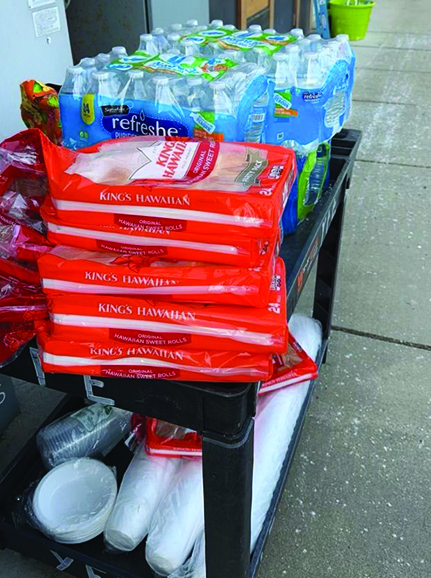
The Tulalip Caring Warrior’s donation drives are for the community, by the community. Upon seeing the impact of their first drive, in which they delivered homecooked meals to the homeless population of Tulalip, Marysville, and Everett, the Caring Warriors expanded their donation drive to include warm winter wear and blankets for their holiday drive in December. The ladies reached out to their community, asking for donations of gently used scarves, hats, coats, blankets, gloves, and snacks.
They recevied heartwarming responses from the community as countless bags of clothes and several boxes of non-perishable foods, as well as numerous monetary donations, were collected for the group’s second donation drive. Over 100 unhoused individuals received blankets, warm clothing, winter care kits, and hot meal resulting from the community’s generous donations and the hard work put in by the Caring Warriors.
The successful donation drives inspired other Tulalip locals to join in on the Warrior’s give-back efforts. Consisting of both Tulalip tribal members and citizens, the group originally began with Angelica Trinidad, Kayla Joseph, Odessa Flores, Melissa Young, Kylee Sohappy, and Janae Zackuse, and now additional members include Mahayla Flores and Chena Joseph as well.
The distribution for their third donation drive took place on January 14. In the freezing cold, on a day that had a high of 33 degrees and a low of 12 degrees, the Tulalip Caring Warriors loaded up their vehicles with donations and freshly prepared meals and hit the streets of Tulalip and its surrounding municipalities to bring a little warmth to those most in need.
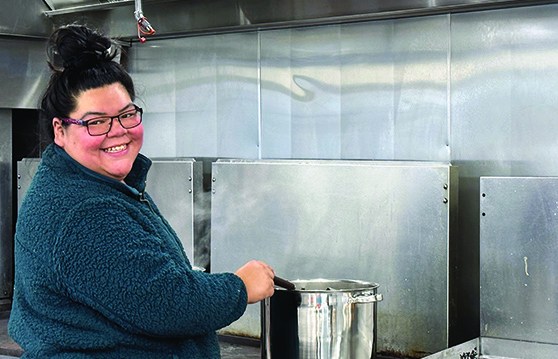
Tulalip Caring Warrior, Odessa Flores, stated “We united once again for our give back event, extending support to the unhoused community during this harsh winter. We served 100 unhoused community members in Snohomish County. We provided warm bags, distributed donations, and served stew with rolls and waters. Our group is expanding and growing in numbers. Together, we organized the generous donations from our community, recreating a heartfelt family recipe from Melissa Young’s mother, Evangelina McGill (Angie). Angie shared her homemade stew recipe, and we worked collaboratively to prepare it.”
She continued, “Due to dropping temperatures, we extended our efforts to locate individuals seeking cold shelters. The gratitude from those we encountered was overwhelming – appreciating not just a warm meal but also blankets and coats for the chilly nights. They also eagerly provided leads on where more donations and meals could make a difference.”
Over the years, we’ve heard time and time again from Tulalip artists that you must have a good mind and heart when conducting cultural, spiritual, or community work, and that it’s all about the energy you put into your craft or project. These traditional values and that cultural mentality seeped into the Tulalip Caring Warriors’ donation drives.
Now, of course one of the main highlights for the Caring Warriors is bringing smiles to those in need on distribution day. However, another major aspect of this work is the environment in which it’s conducted. Since the Tulalip Caring Warriors’ foundation was originally built on a close-knit friendship, the ever-growing group puts in a vast amount of good vibes and love into their work. And in the weeks of preparation leading up into distribution day, you can bet that Caring Warriors are having a blast, filling the room up with laughter each and every time they gather to discuss planning efforts, sort through donations, and cook meals on a large scale for their monthly events.
Tulalip Caring Warrior Kayla Joseph shared a quote by Robin Wall Kimmerer (Potawatomi Nation) from the book ‘Braiding Sweetgrass’: “Wealth among traditional people is measured by having enough to give away”.
Said Kayla, “When asked why we do this, this [quote] sums it up completely. Having the ability to give back to those that are in need, in the best ways that we know how – food is a universal way of saying we care about you. Next month we are doing spaghetti, it’s my turn to bring the recipe. In between sorting the donations and cooking the meal, we got a few laps around the track to get in our daily steps. We work to build each other up in all ways of life.”
The Warriors also encourage youth participation and often recruit their own kids and young relatives to help out with the donation drives. Tulalip Caring Warrior Angelica Trinidad expressed, “I love this opportunity to teach my son about the importance of giving back, because we’re all struggling. In this day and age our economy sucks. We all have different battles and struggles. We don’t know what’s going on in people’s daily lives. I firmly believe that if you want to see change in the world, be the change you want to see. It’s awesome to be able to set that example for my son.”
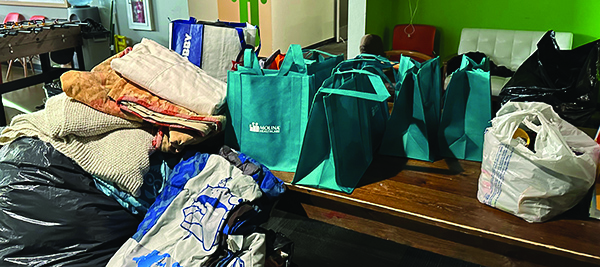
The next distribution day will be held in mid-February. The Tulalip Caring Warriors are now accepting donations for their next drive until February 17. They are asking for your help to make this another successful drive for the unhoused citizens of our community. If you have any gently used warm winter gear you would like to donate, you can make your contribution at their new drop-off location at the Tulalip teen center.
The Caring Warriors are also taking donations for their next homecooked meal and are accepting snacks, spaghetti noodles, spaghetti sauce, rolls, and bottled waters. If you would like to take it a step further and donate your time and efforts to the cause, they would like to extend an invite for you to join their team. Please reach out to Odessa Flores at (425) 319-4868, or Angelica Trinidad at (425) 404-1211 for further details.
New Year’s resolution series: Ty Juvinel elevates Coast Salish culture with Kraken collaboration

By Micheal Rios, Tulalip News
Merriam-Webster dictionary defines a New Year’s resolution as a promise to do something differently in the new year. That definition doesn’t really do justice for the true dream chasers out there. Individuals with the courage to take risks and push themselves beyond their perceived limits to achieve something incredible. For these types, resolutions are merely goal-oriented tasks that bring them one step closer to fulfilling a dream.
Enter Tulalip artist Ty Juvinel and his dream of fusing formline, the traditional art form of our Coast Salish ancestors, with his passion for the Washington’s professional sports scene. Following the newly minted Seattle Kraken officially announcing their team name and logo, in July 2020, it was a perfect blend of rhyme and reason for Ty to attempt to manifest his dream.
“The first helmet I did was simply a passion project. Something I wanted to do to challenge myself by creating something new,” recalled Ty. “I’m a big hockey fan. Other people may not view it this way, but I view hockey as an evolution of Lacrosse, which is an Indigenous sport. But also, if you do some research and look up Mic-Mac hockey sticks, you’ll find the best hockey sticks of the early twentieth century were made by First Nations people….[rest of quote]
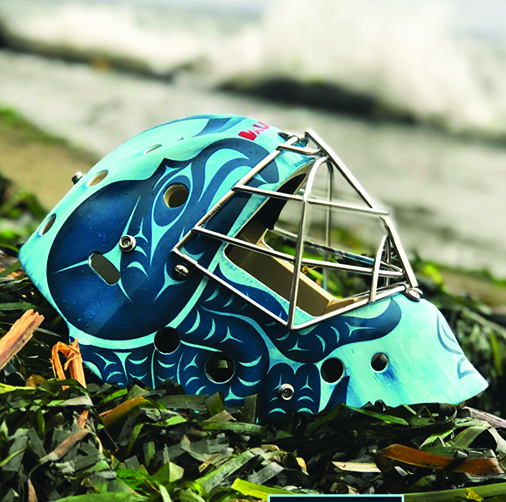
“After I finished the helmet I posted it online and shared with people close to the Kraken organization. Seemingly, there was no interest,” he divulged. “But that didn’t stop me from continuing to try and make my dream a reality.”
As 2020 rolled into 2021 and then 2022, a new development began to take form within the intersection of creativity and athletics. A new trend emerged as up-and-coming artists began finding unique opportunities to collaborate with professional sports teams. This innovative partnership is redefining the way sports and art converge, turning the gigantic fan bases of professional teams into a platform for artists to showcase their talents to a much broader audience.
Seattle Kraken vice-president of brand, Aaron Wiggan, recalled how it became a priority for to collaborate with local Indigenous artists. “It began by understanding how much representation matters. When we think about Seattle and the fabric of culture in this place, so much of it is rooted within the Coast Salish people and history. It’s something that really separates this region from other places across the United States.
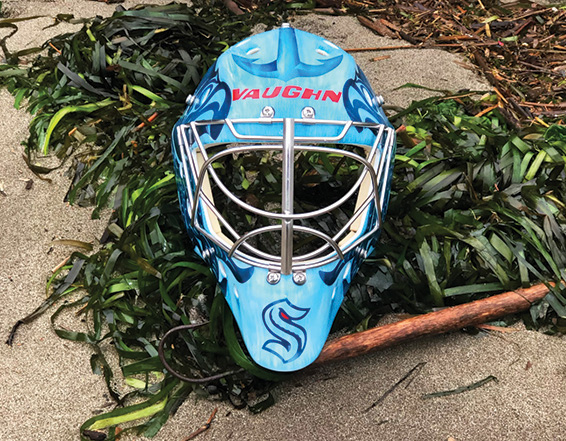
“It became a foundational component of who we want to be as a team, to connect with different communities, specifically tribal communities. There’s probably no better way for a mass audience to engage with, relate to, and understand a culture better than through art,” he added. “Ty is such a generous person. He showed up wanting to participate, willing to give a lot of himself and his artwork to us, but also desiring to share with us his history and his people’s history.”
More than two years after fusing formline and fandom, an opportunity afforded to him by Marysville local Bill Yates who sent him the initial mask to mock-up, Ty received an invitation by the Kraken to collaborate. What was just a farfetched idea planted by a Tulalip artisan strolling the sands of Mission Beach looking for inspiration was about to bloom into a true cross culture collaboration.
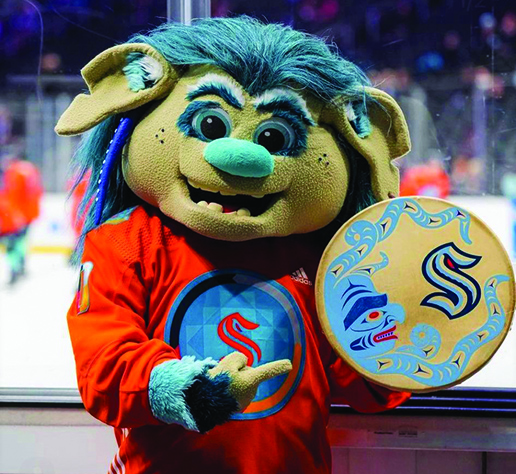
Ty began working closely with Aaron and his fellow members of the Kraken’s brand team to infuse his creative vision into various aspects of the team’s identity. This included several brainstorming sessions regarding custom traditional item with remixed Kraken imagery (paddle and drum), conceptualizing stunning Coast Salish awareness campaigns (land acknowledgement), and even designing iconic team merchandise (masks and jerseys) that resonate with local hockey fans on a deeper level. All while paying homage to the ever-vibrant tribal culture that remains omnipresent in our Coast Salish territory.
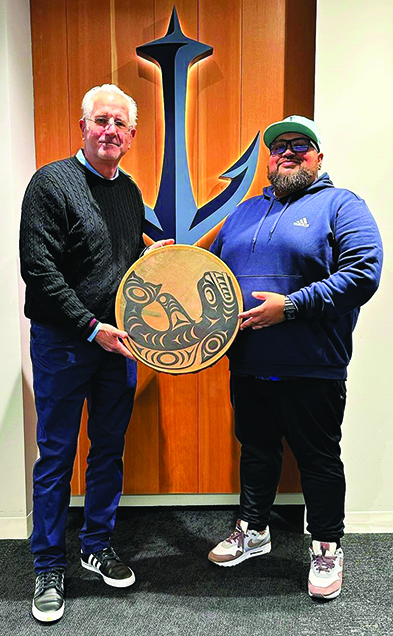
As fate would have it, Kraken CEO Tod Leiweke kept a carved and painted paddle gifted from Ty in his office. In a meeting between the CEO, Brand VP, and Kraken goalie Philipp Grubauer to discuss his desire to have a one-of-a-kind mask created for the team’s upcoming Indigenous People’s Night, Philipp spotted the paddle and asked, “Who made this?”
In the weeks after that fateful meeting, Philipp, who is a German citizen, would befriend Ty. Even going so far as to visit the Tulalip Reservation multiple times, including bringing his German parents with to visit the Hibulb Cultural Center while Ty offered his cultural perspective as tour guide. Philipp and Ty discussed design imagery for the intended mask, with each subsequent conversation serving to strengthen the bond between professional player and devout fan.
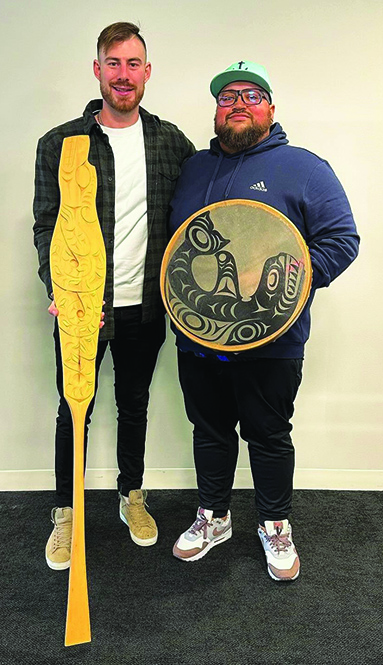
“Philipp really wanted something that represented all the Tribes in Washington State, which as we know is a difficult concept for such a small canvas like a goalie helmet, so I chose some iconic Coast Salish imagery,” explained Ty. “Using the air vent holes as eyes, there are Kraken with salmon spirits on each side, a spirit bird on the crown, a wolf along the chin strap, and on the back plate is a bear fishing for salmon. The design also includes a German eagle to represent Philipp’s ancestry.”
Upon receiving the freshly painted helmet and seeing all the fabulous formline gracing its contoured shape, Philipp, the 12-year NHL pro goalie, shared, “Unbelievable! This is one of the coolest masks or the coolest mask I’ve ever had. Incredible work. I’m so happy with it and so excited to wear it.”


Ty’s mask made it’s professional debut last month, when the Kraken held their Indigenous People’s Night at Climate Pledge Arena on December 9. Among 17,000 fans in the sold-out arena was Ty and his family, including 13-year-old son Landon and 11-year-old daughter Teagan.
“Being able to share that moment with family was everything. I had tears in my eyes because it was such a powerful moment seeing our culture be recognized in a way that’s never happened before,” said Ty. “It’s recognition on a different level, a national level. How many people from around the continent watched that game and got to see our culture be recognized and honored? It’s powerful, that’s the best I can put it.
“Definitely a lot of emotion because this whole thing started as an idea I had for what it would look like if Seattle’s newest sports team used our art, our aesthetic to create their designs,” he continued. “It went from that idea to one phone call, a couple years later, inviting me to collaborate that made my dream a reality. Now, I can use this experience to tell my fellow artists and the ones coming up to never stop dreaming. I’m just a kid from the Rez. If I can do something like this, then others can, too.”
As the trend of up-and-coming artists collaborating with professional sports teams continues to gain momentum, the future looks promising for both worlds. This mutually beneficial relationship not only provides artists with unprecedented visibility, it also enriches the fan experience by introducing diverse visual elements to the world of sports.
“Philipp Grubauer only uses a two-mask rotation and Ty’s is one of them, so seeing his mask on TV will continue to be routine,” stated Aaron, Kraken Brand VP. “Ty is in a roster of pretty incredible artists, and we absolutely plan on continuing our partnership with him.”
Collaborations, like that between the Seattle Kraken and Tulalip’s own Ty Juvinel, are not just about creating beautiful visuals, which they absolutely do, but they are also about celebrating the shared passion that unites fans and artists alike. It’s an amazing fusion that unites love for the game with the power of artistic expression that can capture an entire culture.
January 27, 2024 syəcəb
Use the following link to download the January 27, 2024 issue of the syəcəb
Tulalip youth explore the great outdoors
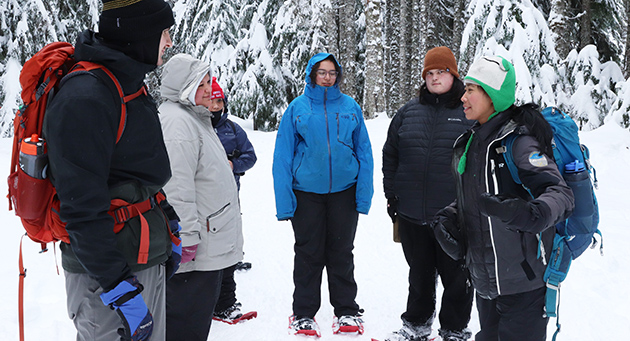
By Wade Sheldon, Tulalip News
As the year progresses and we sprint towards the end of the first month in 2024, exploring new activities becomes a focus, especially in the cold weather. If you enjoy outdoor activities and revel in playing in the snow, snowshoeing might be worth a try.
Crafted with a broad footprint that disperses the user’s weight, snowshoes offer a unique ability to glide atop snow-covered landscapes. Historical records, including those on Wikipedia, trace the invention of snowshoes back 4000 to 6000 years in Central Asia. Their evolutionary peak, particularly before the 20th century, manifested in the hands of North America’s Indigenous peoples. These communities, with distinct styles tailored to varied regional conditions, ingeniously utilized snowshoes not only for practical purposes such as hunting and travel, but also as integral elements in their cultural expressions, including traditional dances.
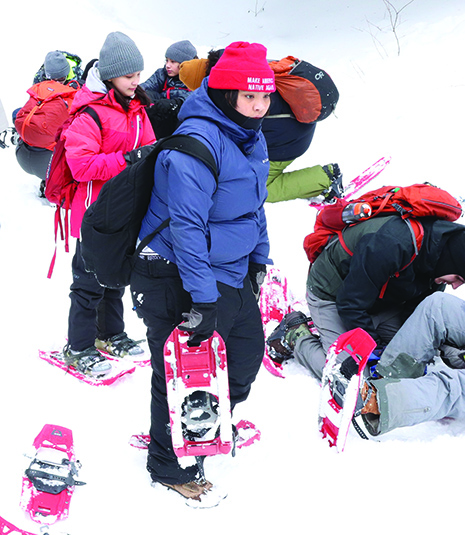
On January 20, Melissa Gobin, Tulalip Tribes Environmental and Education Outreach Coordinator, along with colleagues from the education department, and a few members of the YMCA Bold and Gold, an outdoor adventure tour group, invited tribal youth for a snowshoeing trip at Gold Creek Pond near Snoqualmie Pass. The hike would be about 2.8 miles roundtrip and relatively easy on the difficulty level.
During the hike, Melissa expressed her need for the youth to become more involved and learn how they could be the ones to help shape the future. As the youth trekked through the snow-covered landscapes, the journey wasn’t merely a physical exploration but also a venture into potential career paths. With unwavering passion, Melissa Gobin seized this opportunity to share insights on how connecting with nature could translate into meaningful professions within the tribe. Amidst the captivating beauty of the frozen scenery, Melissa underscored the significance of environmental stewardship and the vital role the younger generation plays in the future of the Tulalip community.
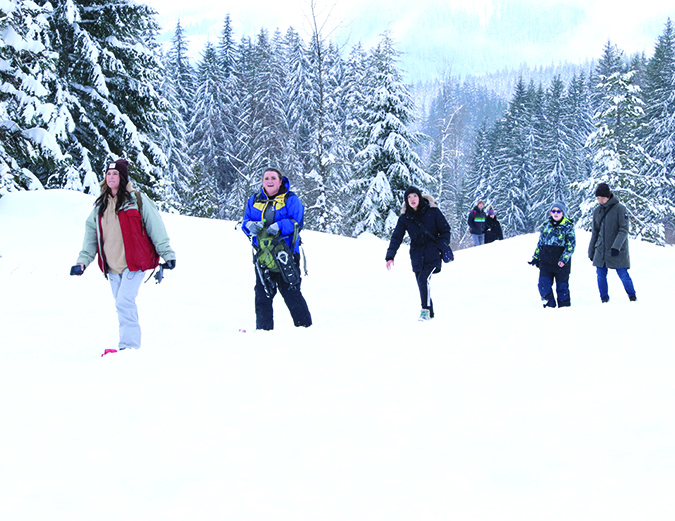
“That was my first snowshoeing trip, and it was pretty easy,” said Melissa. “I think getting the kids out and seeing a different area and that much snow while doing something out of the norm and watching them play and roll around in the snow was my favorite part. I like seeing the kids get excited, especially when they don’t want to go, but end up having fun. That makes me happy.
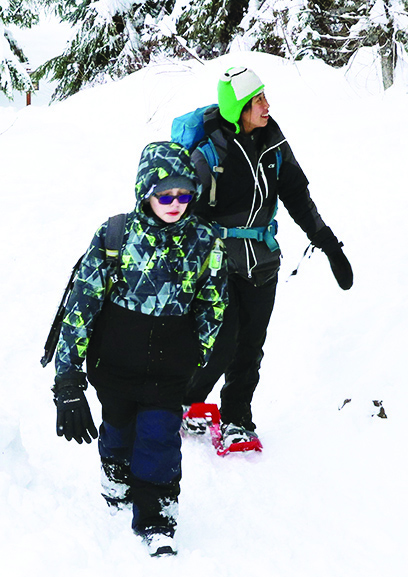
“I wanted the kids to know and appreciate that this is a beautiful surrounding. Protecting these types of areas is important to keep them safe for our future and our seven generations down the line. Getting the kids to appreciate the outdoors is something that my program is trying to establish. We are looking for kids who want to do these things and to be out in nature as stewards of the land. I want to educate the kids, but I want them to want to be there. I am trying to mold kids into becoming biologists, getting into forestry, and learning our treaty rights. That’s why we are doing this program to educate and get the kids involved so that we have a future in natural resources with our people. We have a lot of people that will be retiring, and we will need people to step up and take the mantle.”
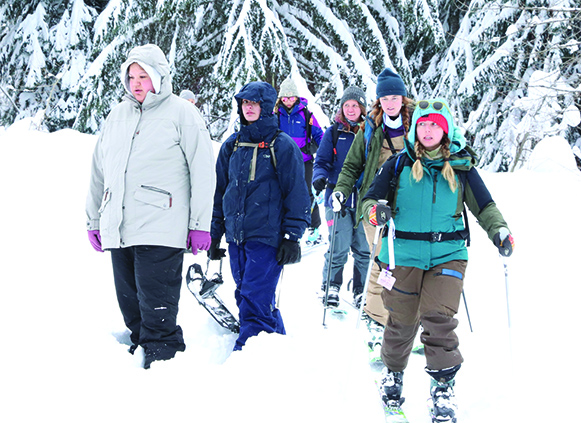
“I have never been snowshoeing before,” said Santana Shopbell of the Tulalip Education department. “I was nervous because the snowshoes didn’t look very durable, but man, are they good. I might need to invest in some because I might not be able to snowboard, but I can snowshoe. It was fun being out there with my mate and all the youth. This is my first week back with the education division, and it’s good to collaborate with Melissa and the YMCA. Hopefully, the trip sparked something in one of the kids to want to pursue a job in natural resources.”
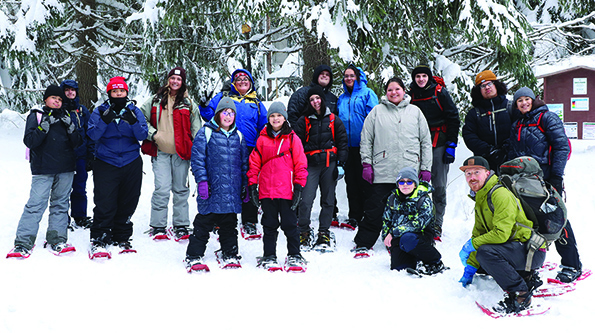
“Never been snowshoeing before, it was nice,” said Tulalip tribal member Luciano Flores. “It was fun and nice walking around the trail. My favorite part was walking across the frozen lake. If you were going, be prepared and have all the right gear.”
For information on future trips or the program, contact Melissa Gobin at mgobin@tulaliptribes-nsn.gov.
Treaty Days: Tulalip commemorates the signing of the 1855 Treaty of Point Elliot
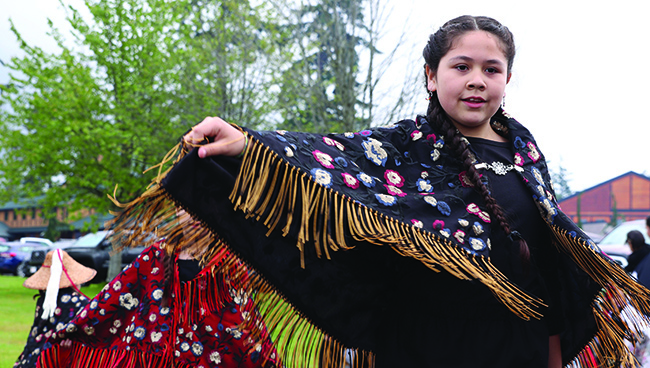
“Our treaties are everything. As Native American people, we need to protect our treaties as much as possible and thank our ancestors for fighting for what we have today. Without everything they suffered for, we wouldn’t have a lot of things that we have today, as far as our fishing and hunting rights. And also, just being Native American in general – to be able to sing our songs, carry our culture, and preserve that for our future generations.”
– Josh Fryberg, Tulalip tribal member
By Kalvin Valdillez, Tulalip News
On a chilly Friday evening, the descendants of the sduhubš were joined by several families from nearby tribes to commemorate the 1855 Treaty of Point Elliott. With temperatures in the low 30s, the people found warmth around large firepits on the inside of the cedar plank longhouse that overlooks Tulalip Bay. Through strong drumming and powerful singing, the tribes conducted cultural and spiritual work at the yearly potlatch, known locally as Treaty Days.
Each winter, the tribes take time to celebrate their culture, honor longstanding traditions, and also thank their ancestors who signed the 1855 Treaty of Point Elliott. The treaty guaranteed the continuance of their traditional way of life, pertaining to fishing, hunting, and gathering rights, and it also identified a number of tribes, including Tulalip, as sovereign nations.
Virginia Carpenter, Tulalip Elder, stated, “The treaty is important to me because it gives us a permanent place to live and because it gives us all of our rights. If we didn’t have the treaty, we really wouldn’t have anything, they would’ve kicked us off of our land. It’s an umbrella for us to live safely and the way we want to live.”
January 22 marked 169 years since the historical signing took place at present day Mukilteo. Close to 5,000 Coast Salish people gathered to witness their leadership negotiate terms of the treaty with Washington Territory Governor Isaac Stevens. The 2024 Treaty Days gathering was held at Tulalip on January 19, 110 years after the first treaty commemoration event was organized by William Shelton in 1914.
“Treaty Days is a commemoration of the signing of the 1855 Point Elliot that affected the coastal tribes,” shared Tulalip Elder, Inez Bill. “At this time, we remember and acknowledge our ancestors who signed the treaty and reflect on the importance of that treaty – who we are as a people and how to continue our way of life.”
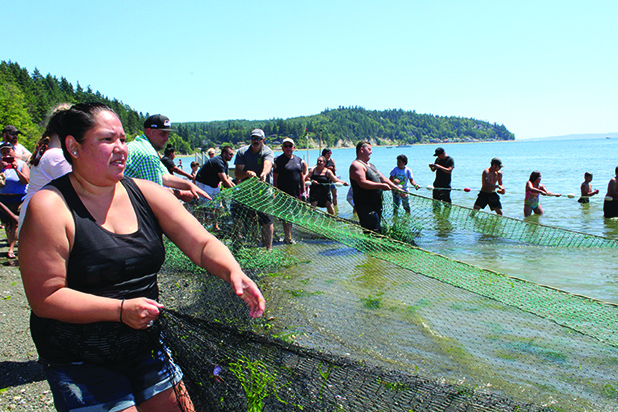
With future generations in mind, the tribal leaders ceded millions of acres of their ancestral land to the US government for white settlement, which currently makes up Washington’s King, Snohomish, Skagit, and Whatcom counties. In exchange for ceding such large portions of land, each tribe reserved the right to fish at their usual and accustomed grounds and stations, as well as the right to hunt and gather on open and unclaimed lands. In addition, the treaty established home bases for the tribes, which are now known as the Tulalip, Swinomish, Lummi, and Port Madison reservations.
Tulalip Chairwoman, Teri Gobin, said, “Our people met together, and all agreed to sign the treaty. By ceding that land, from the water to the mountains, they guaranteed us our treaty rights for future generations. I’m so glad that our ancestors thought about that – because they were trying to protect our tribes.”
Because of those rights that the tribal ancestors fought to include in the 1855 Treaty of Point Elliott, each Tribe has grown and persevered over the years, with the ability to govern their own affairs while also continuing their traditional way of life.
Tribal member Brian Green expressed, “The treaty is literally my livelihood. We fight for our rights every day – fight to keep our treaty rights. I want my kid’s kids to come out here and be able to exercise their treaty rights. Not everyone has to be a fisherman, but it should be there if they want to exercise it.”
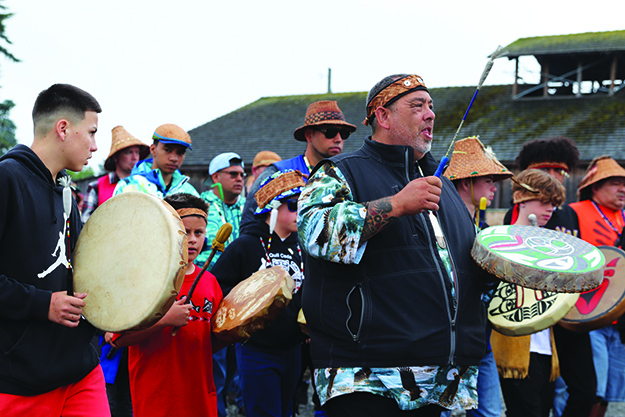
Ever since the treaties were signed in the late 1800’s, tribal nations across America have worked hard to protect and defend their treaty rights whenever the US government attempted to ignore or defy them, in instances such as the Fishing Wars in the ‘70s. Thanks to the fearless activism of tribal leaders such as Billy Frank Jr., the Fishing Wars conflict ultimately led to the Boldt decision in 1974, where the U.S. District Court for the Western District of Washington and the U.S. Court of Appeals for the Ninth Circuit reaffirmed that the fishing rights of the northwest treaty tribes were the supreme law of the land.
“Treaty rights are an inherent right,” explained Ryan Miller, Tulalip Tribes Director of Treaty Rights and Governmental Affairs. “Treaty rights were not given to tribes. It’s a common misconception that the government gives Native peoples special rights. That’s the exact opposite of how it works. Tribes are sovereign nations; they give up rights and they retain rights. Treaty rights are rights that are not given up by tribes, and they’re upheld by the federal government as part of their trust relationship with the treaty tribes.”
In 1905, 50 years after the 1855 Treaty of Point Elliott was signed, an Indian boarding school was established on the Tulalip reservation. Through brutal and cruel practices, the US government began assimilation efforts to ‘kill the Indian, save the man’. During this dark era in American colonial history, Native children were forcibly removed from their families and had to attend the catholic boarding schools. If the kids were caught speaking their ancestral language or practicing their culture, they were often physically punished. Many children did not make it out of the boarding schools alive, and those who did would unintentionally pass that horrific trauma down their bloodlines.
At this same time, tribal adults and elders were also banned from cultural and spiritual practices. Longhouses across the region were burned down and those found guilty of carrying on their traditions were jailed and viewed as demonic.
Against all odds, and in the face of adversity, Tulalip tribal member William Shelton took the initiative to ensure that the cultural lifeways of his people would not be lost and would live on well into the future. Through persistent correspondence with the Tulalip Superintendent and the US Secretary of Interior, Shelton convinced the government to allow Tulalip to build a longhouse along their shore in 1912.
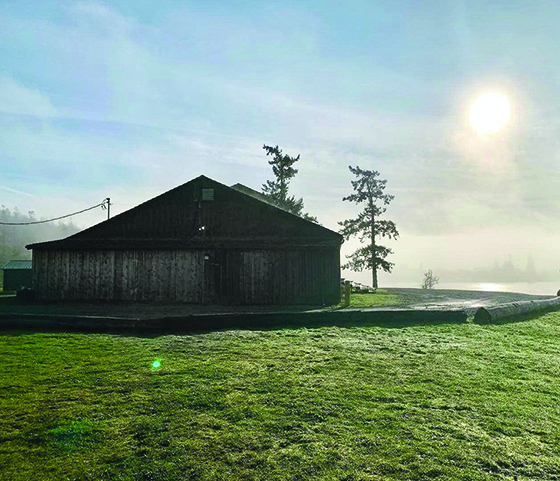
The longhouse, Shelton detailed in his letters with the government, would serve as a place where all of the tribes could celebrate the treaty together on an annual basis. Following its construction, the longhouse became a safe space where the tribes could engage in their culture once year from 1914 until 1967, when the current smokehouse was built to replace Shelton’s historical longhouse.
“Treaty Days is really important to me because all of us, as sduhubš people, come from that longhouse way of life,” expressed Tribal member, Roselle Fryberg. “That’s the way our ancestors prayed, that was their healing, that’s how they protected their families. And it was also a way for our people to celebrate our treaty at a time when practicing our culture was outlawed, and we were thrown in jail for singing and dancing.”
Students at the boarding schools were able to attend the Treaty Days celebration and under this guise, the tribes were able to preserve their traditions and pass on their teachings to the next generation year after year. And though the Tulalip Boarding School was closed in 1932, the descendants of the signatories of the 1855 Treaty of Point Elliott continued to gather at the smokehouse every January to honor the treaty and take part in cultural practices that were once prohibited throughout the country.
“It’s spiritual healing,” voiced Tulalip tribal member, Celum Hatch. “When I go, it’s because of the strength of everybody’s songs. The strength within those four walls gets me through the next couple of months. When I go in there, I go with a good head. Because I know what I’m going in with, I’m not walking out with. I go for healing. And I go to help everyone else and support them.”
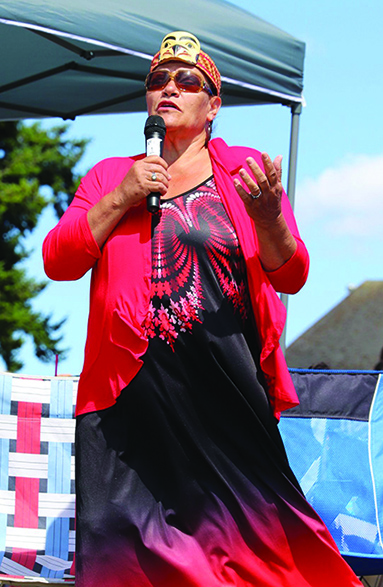
To this day, Treaty Days continues to be a major event that tribal members across the region look forward to every year. And as William Shelton envisioned, the longhouse remains a sacred place where innumerable teachings of the culture and traditions are passed along and kept alive. Many of those songs, dances, spiritual practices, and stories made it through the passage of time and are still practiced more than 100 years after they were originally banned.
Said Tulalip Elder, Ray Fryberg, “We gave up a lot in the treaty to keep our sovereignty – to be able to determine our own future and our own direction in our tribal path. And also, living on the reservation – protecting those rights that were reserved for us, as well as the spiritual and cultural way of life. We have the responsibility to revisit the treaty all the time, so we know we are keeping our younger people abreast and informed as much as possible.”
Teresa Moses Whitish
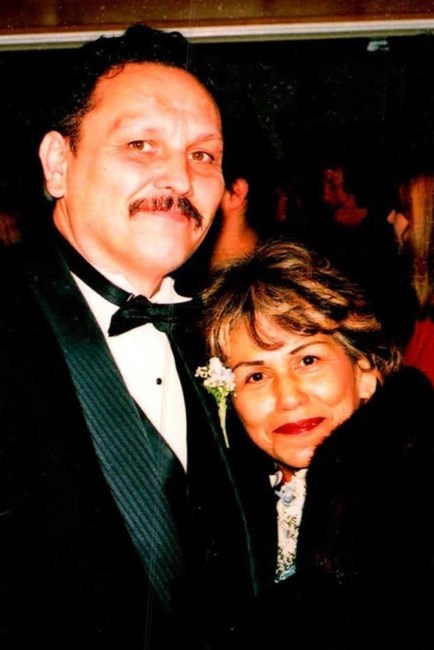
JANUARY 28, 1949 – JANUARY 13, 2024
Teresa Moses Whitish ‘yabulqs” was born on 1-28-1949 to Marya and Walter Moses Sr. in Tulalip, WA she passed away surrounded by her loved ones on 1-13-2024. She leaves behind sons Wallace King Sr “Roy’ yubəč, Randy Brinson, and Saul Brinson (Julia Brinson). Daughters Leah Hood and Sylvanna Brinson. Her 14 grandkids and 7 Great grandkids. Siblings Johanna Moses, Rachel Hood, April Smith, Julie Russell, Vicki Tsoodle , Daniel “Danny” Moses Sr. Proceeded into death by her daughter Arlena Hood, her brothers Walter Moses Jr, Raymond “ti-at-mus” Moses, Victor Moses, Gilbert Moses. Teresa enjoyed being a fisherwoman, language warrior, everyone’s favorite auntie and hands down the best cook. Her hugs were magical they could change your whole day around. She had a heart big enough for everyone, if she loved you she loved you forever. She was a proud Tulalip Tribal Elder. We will be meeting at Schaefer Shipman funeral home in Marysville, WA at 12pm on Friday January 19th, 2024 and then proceeding to Tulalip Gathering Hall, Dinner 5pm Evening Services to follow. Saturday January 20th, 2024 her final resting place will be in the Moses Family Cemetery in Sauk-Suiattle WA.